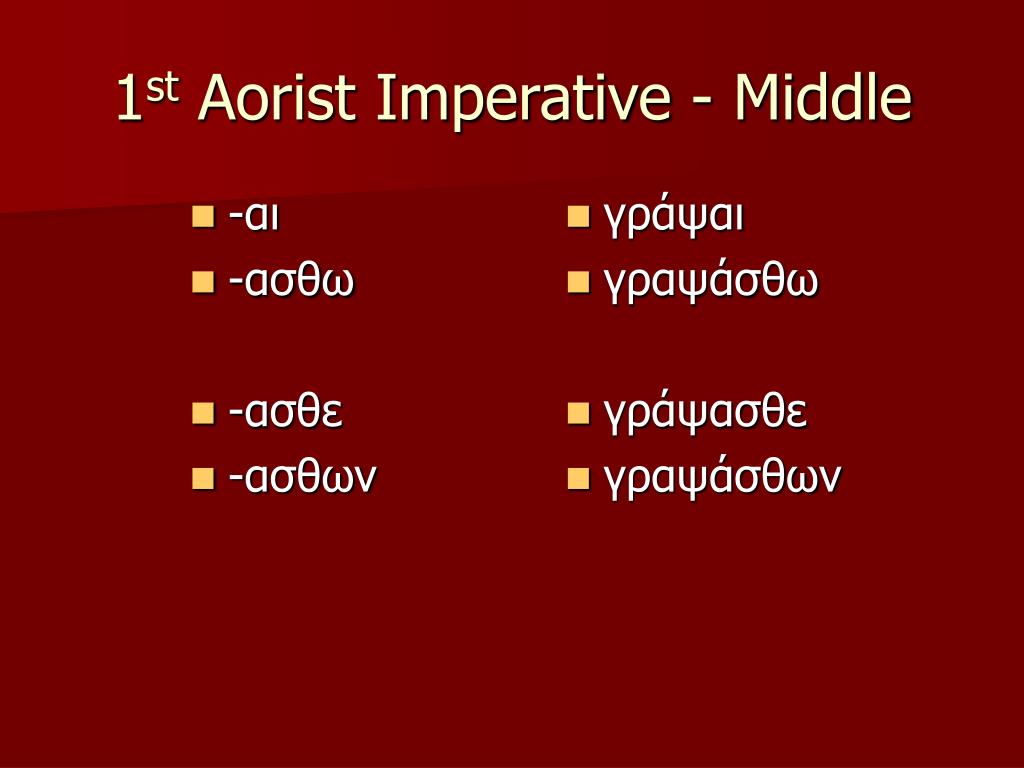Aorist imperative attic.
Abbreviated aor verb forms usually express perfective aspect and refer to past events similar to a preterite.
Of αἰρῶ αἰρέω choose.
For the distinction of time between the present and aorist see 313.
Change from the aorist tense to the present and imperfect tenses in the same person and number.
The imperative is used to express a command exhortation or an entreaty.
Paul uses the middle voice to express the view that god chose the people for god s own reasons not to suggest that god is the one chosen.
Identify whether it is a first or second aorist and if the latter whether the second aorist is thematic or athematic and 2.
Notice that the plural forms of the aorist active indicative of γινώσκω use a second aorist stem but first aorist endings.
Personal endings of the active imperative.
In traditional grammatical terminology the aorist is a tense a section of the verb paradigm formed with the same stem across all moods by contrast in theoretical linguistics tense refers to a form that specifies a point in time past present or future so the aorist is a tense aspect combination.
The literary greek of athens in the fifth and fourth centuries bc attic.
Aorist ˈ eɪ ə r ɪ s t.
Because the aorist stem of γινώσκω γνω ends in the long vowel ω the thematic vowel of the singular endings is lost through contraction.
Ancient greek grammar had the aorist form and the grammars of other indo european languages and languages influenced by the indo european grammatical tradition such as middle persian sanskrit armenian the south slavic languages and georgian also.

